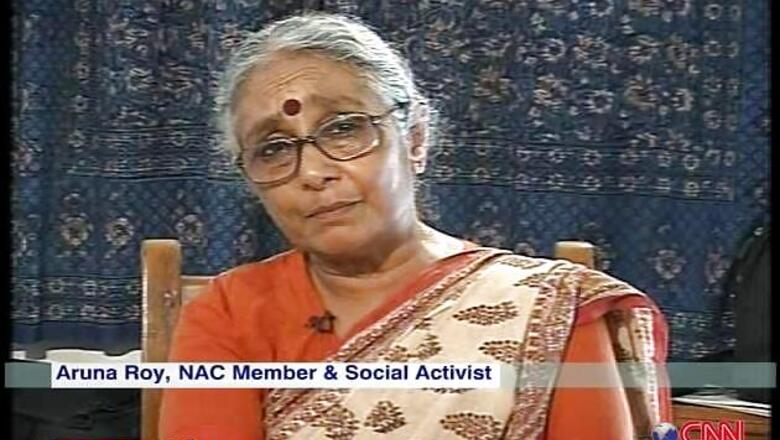
views
More than 3000 working poor are right now agitating at Jantar Mantar, New Delhi, under the banner of Pension Parishad as the curtains are up on the 'right to pension' campaign. Spearheaded by Aruna Roy, the Mazdoor Kisan Shakti Sangathan leader and member of the National Advisory Council (NAC), the campaign seeks universalisation of a minimum pension of Rs 2000 per person per month for all elderly citizens of India (above 55 years of age) irrespective of their economic status. If implemented, the right to pension can significantly alter the social security paradigm in the country.
Speaking at a press conference earlier in the week before the Pension Parishad began on May 7, Roy said, "There has been a lot of debate about poverty and about the disenfranchised. Earlier, poor people did not live beyond 60 years of age. But today longevity has increased but health conditions have deteriorated. These people suffer from similar diseases as the upper and middle class but they lack support. Today, even rural families are nuclear. They don't have the strength to draw water from the well nor do they have the financial stability which would allow them to hire a help. It is the duty of the state to provide pension to people who are no longer able to work. There are progressive international precedents in lower and middle income countries with respect to pension."
Other prominent members of the movement include co-convenor Baba Adhav, the veteran leader of unorganised workers in Maharashtra, economist Prabhat Patnaik, Ravi Srivastava, the former member of the National Commission on Enterprises in the Unorganised Sector, Annie Raja, secretary of the National Federation of Indian Women, and Subhash Lomte of the Maharashtra Labour Union.
The movement thinks the government has an obligation to the 88 million elderly people (as of 2009, the number is expected to cross 300 million by 2050), 93 per cent of whom have been/are/would be part of the unorganised labour force.
As of now, under the Indira Gandhi Old Age Pension scheme, those above 60 get Rs 200 per month and those above 80 get Rs 500 per month as pension.
The movement believes that this amount is too low and the scheme covers only below poverty line citizens. Only 1.8 crore of the elderly population benefit from this scheme at present.
If implemented, it is expected to cost the country almost Rs 2,00,000 crore or 2 per cent of its current nominal GDP. But team members contend that it is a modest amount considering the country's 8 per cent year-on-year growth and considering the fact that a civilisation is judged by the way it treats its elderly people.
In an interview to Firstpost, also run by Network 18, she said, "If you don't invest money, you can't run the economic paradigm the way you are presently, that everything has to be paid for including health and education. There is no social security. If you want do bring down everything to marketability, you cannot run the system. It is about people who have worked their entire lives constructing roads, working on various projects for the citizens of the country. They have shaped up the roads, highways, schools and hospitals in country we see today. They should not be living in misery. Let me give you an example. The government says that the root of numerous health issues in rural India is that people go to quacks and not qualified doctors. Now suppose people go to doctors, then do they have the money to afford even the basic schemes in hospitals? If a bone gets fractured, they don't have the money to get it plastered."




















Comments
0 comment